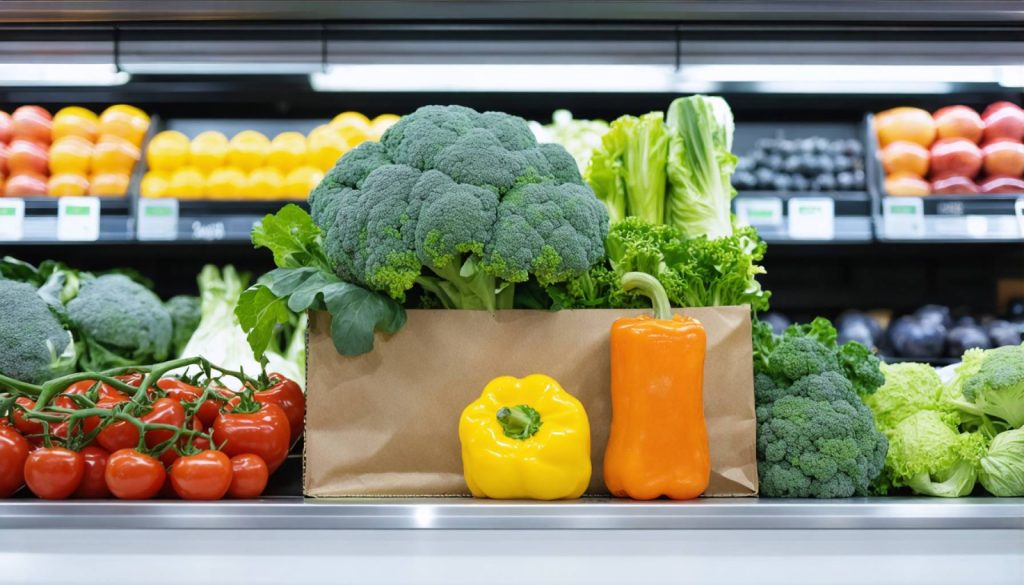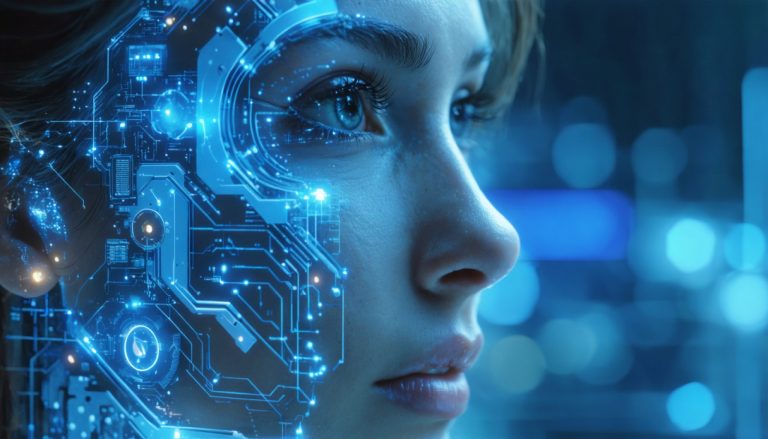
- Instacart introduces AI-powered tools, Store View and Second Store Clerk, to enhance grocery inventory management.
- Store View uses AI and computer vision for real-time inventory updates, helping customers know product availability instantly.
- Second Store Clerk locates out-of-stock items in nearby stores, ensuring prompt fulfillment and customer satisfaction.
- Caper Carts integrate sensors and location-based AI for advanced item recognition and shopper guidance.
- These innovations aim to optimize stock levels, minimize food waste, and provide precise, timely insights into inventory.
- Instacart positions itself as a leader in using cutting-edge technology to transform shopping experiences and logistics.
The gentle hum of grocery stores is poised for a high-tech transformation as Instacart unveils its groundbreaking AI-driven tools—Store View and Second Store Clerk—set to redefine how we understand grocery inventory. Evoking the precision of an eagle eye, this pair of innovations promises to turn the chaotic symphony of grocery shopping into a seamless experience.
Store View emerges as a technological marvel, marrying AI and computer vision to conjure real-time inventory snapshots from the jigsaw of videos captured by Instacart shoppers. Imagine walking into a store, and the shelves whisper to you: “This is in stock, that is almost gone.” Store View, like an attentive custodian, ensures you know exactly which products stand tall and which teeter on the brink of scarcity. As this tool rolls out with select retailers in the coming weeks, its embrace is set to widen, painting its influence across the U.S. and Canada by the close of 2025.
Meanwhile, Second Store Clerk steps onto the stage with a mission of its own—scouring nearby store locations for out-of-stock items, determined to bridge the gaps and fulfill customer desires without delay. If your chosen store doesn’t have it, rest assured that another is being scouted simultaneously—dispatching a second shopper if need be, ensuring no craving goes unsatisfied.
These technological strides crystallize in the form of Caper Carts, already a beacon of innovation in select aisles. The amalgamation of advanced sensors and location-based AI in these carts creates an orchestrated ballet of item recognition and consumer guidance. They do more than simply record inventory; they chart the flow of shoppers, producing heat maps that depict the subtle pulsations of human activity in the retail space. The future glistens as new camera systems promise inventory updates as frequently as every hour, sculpting data into a dynamic stream of real-time insights.
Amidst these advancements, Daniel Danker, Instacart’s Chief Product Officer, weaves a narrative of reliability and precision, painting a picture of a future where online grocery shopping not only fulfills desires but anticipates them. By leveraging these AI-powered tools, Instacart plants a firm foot into the future, promising both shoppers and retailers a world where accuracy reigns supreme.
The significance of such innovations isn’t solely in convenience but in the ripple effect it promises—tackling issues like food waste, often fueled by inaccurate inventory records. In the intricate dance of supply and demand, tools like these could be the decisive third partner, optimizing stock levels and reducing wastage.
Instacart is not just adjusting the tune of grocery logistics; it is rewriting the entire score, blending cutting-edge technology with everyday experiences. As these tools unfurl across the retail landscape, they echo a resounding promise: precision and satisfaction, delivered fresh every hour.
The Future of Grocery Shopping: How Instacart’s AI Tools Are Transforming Retail
Instacart’s AI-Powered Revolution: Key Features and Benefits
Instacart’s innovative AI-driven tools, Store View and Second Store Clerk, are poised to dramatically transform the grocery shopping experience by providing real-time inventory insights and enhanced availability tracking. These tools, along with the introduction of Caper Carts, herald a new era in retail that leverages technology to improve efficiency, reduce waste, and enhance customer satisfaction.
How These Tools Work and Their Real-World Applications
1. Store View Technology: By integrating AI with computer vision, Store View provides real-time inventory updates based on data collected from videos captured by Instacart shoppers. This ensures that both shoppers and retailers have accurate information about stock levels at any given time.
2. Second Store Clerk: This feature enhances the traditional shopping experience by scanning nearby locations for out-of-stock items. If an item isn’t available at the chosen store, the tool can easily redirect efforts to another location, ensuring that customers’ needs are met without delay.
3. Caper Carts: These are smart shopping carts equipped with advanced sensors and location-based AI. They not only assist with item recognition and navigation through the store but also create useful heat maps that help retailers understand shopping patterns and improve store layouts.
Industry Trends and Market Forecast
– Projected Growth: According to market analysis, the adoption of AI technologies in retail is expected to grow exponentially. MarketsandMarkets forecasts the AI in retail market to reach $23.5 billion by 2025, reflecting the increasing reliance on technology to drive efficiencies and enhance customer experiences.
– Sustainability Focus: Instacart’s AI innovations could play a significant role in reducing food waste, which the FAO reports as a major global issue, costing approximately $1 trillion annually. By optimizing inventory management and ensuring that supply meets demand, these tools help pare down can reduce excess stock and minimize spoilage.
Pressing Questions and Answers
– How Does Store View Improve Inventory Management?
Store View provides a precise, real-time inventory overview, enabling retailers to manage stock more effectively and reduce both overstock and understock situations, thus minimizing costs and potential losses.
– Can Small Retailers Benefit from These Innovations?
While initially rolled out in collaboration with larger retailers, these tools have the potential to benefit smaller retailers by providing scalable solutions that improve their operational efficiency and competitive edge.
– Are There Privacy Concerns?
As with any data-driven technology, there are considerations regarding the privacy of customer data. Instacart assures users that data collection is anonymized and used solely to enhance shopping and operational efficiencies.
Actionable Tips for Retailers
– Evaluate and Integrate: Retailers should consider integrating AI technologies like Store View and Second Store Clerk into their operations to stay competitive and meet evolving customer expectations.
– Train Staff: Implementing these tools requires staff training to maximize their potential and ensure a smooth transition.
– Leverage Insights: Use the data generated from these tools to conduct more informed decision-making in stock management and customer service strategies.
For further exploration and updates on how AI is transforming retail, explore Instacart.
Conclusion: Embracing a Tech-Enhanced Shopping Experience
Instacart’s AI tools are designed not only for convenience but also to address broader issues like efficiency and sustainability across the retail sector. By integrating these technologies, retailers can offer enhanced shopping experiences, reduce operational obstacles, and contribute to a more sustainable future.



